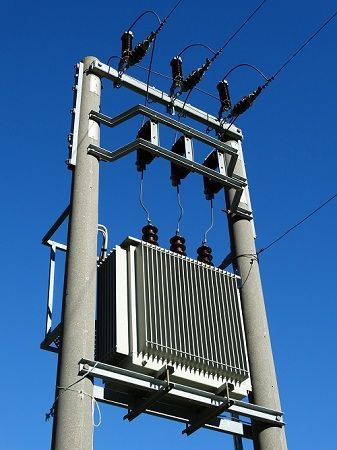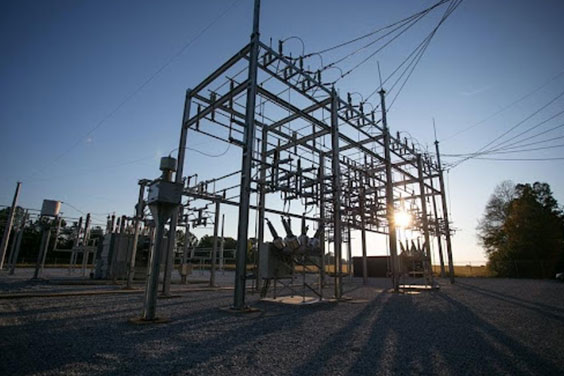An outdoor substation is a type of power substation that is not located inside a building or structure. These substations are typically used for high-voltage transmission lines, and may also be used for medium-voltage distribution lines. Outdoor substations are usually made up of several pieces of equipment, including transformers, circuit breakers, and disconnect switches.
Comparison Between Indoor and Outdoor Substation | Selection of site for substations
An outdoor substation is a type of electrical substation that is typically used to distribute power from a transmission or distribution system to local users. The substation may also be used to provide power to other local systems such as street lighting or industrial loads. Outdoor substations are typically either air-insulated or gas-insulated.
Advantages of Indoor Substation
An indoor substation is a type of electrical substation in which the majority of the equipment is housed within a building. This type of substation is typically used for high-voltage applications, such as transmission or distribution, where space limitations or environmental conditions make an outdoor installation impractical.
Indoor substations offer several advantages over their outdoor counterparts.
First, by housing all of the equipment within a single structure, an indoor substation can save valuable space that would otherwise be required for an outdoor installation. Additionally, indoor substations are less susceptible to damage from weather and other environmental conditions. Finally, because all of the equipment is located within a single building, it can be more easily monitored and maintained than equipment that is spread out across multiple structures.
Overall, indoor substations offer a number of advantages over traditional outdoor installations. When properly designed and installed, they can save space, reduce maintenance costs, and improve safety.
Indoor Substation Equipment
An indoor substation is a type of power substation in which the equipment is housed inside a building. This type of substation is typically used for medium to high voltage systems, up to 345 kV. Indoor substations are usually more expensive than their outdoor counterparts, but offer several benefits including increased security and protection from the elements.
Indoor substations typically consist of three main sections: the control room, the switchgear room, and the transformer room. The control room houses the equipment that controls and monitors the substation equipment. This may include circuit breakers, relays, meters, and other electrical devices.
The switchgear room contains the high voltage switches that connect or disconnect parts of the system. The transformer room houses one or more transformers that convert between different voltages levels.
One advantage of indoor substations is that they are more secure than outdoor units.
This increased security helps to protect against vandalism and theft. Indoor units also offer protection from extreme weather conditions such as hurricanes, tornadoes, and blizzards.
Another advantage of indoor substations is that they allow for better control of temperature and humidity levels.
This can extend the life of electrical equipment by reducing corrosion due to moisture buildup. Additionally, it can help improve reliability by reducing problems caused by heat build-up within the unit.
Difference between Indoor And Outdoor Substation
Substation is an electricity supply point in the distribution system. It receives electricity from transmission lines and distributes it to lower voltage distribution lines. A substation may include transformers to change voltage levels between high transmission voltages and lower distribution voltages, or at the interconnection of two different transmission voltages.
Indoor substations are built inside a building, while outdoor substations are built outside. The main difference between indoor and outdoor substations is the environment in which they are built. Indoor substations are usually built in places with mild climates, while outdoor substations must withstand extreme weather conditions.
Outdoor substations also require more space than indoor substations.
Underground Substation
An underground substation is a type of electrical substation in which the bulk of the equipment is buried beneath the ground. This type of substation is often used when space is limited, or when aesthetic considerations are important.
Underground substations are more expensive to construct than their above-ground counterparts, but they have several advantages.
One advantage is that they are less likely to be damaged by severe weather conditions such as hurricanes and tornadoes. Another advantage is that they can be located closer to load centers, which reduces transmission losses.
There are a few disadvantages to underground substations as well.
One disadvantage is that they are more difficult to maintain and repair than above-ground substations. Another disadvantage is that they can be subject to flooding if not properly designed and constructed.
Indoor Substation Pdf
An indoor substation is a type of electrical substation that is typically located within a building or structure. Unlike an outdoor substation, which is typically located in an open area, an indoor substation houses all or most of its equipment inside a building or enclosure. Indoor substations are usually used in urban areas where space is limited, and they offer several advantages over their outdoor counterparts.
One advantage of indoor substations is that they can be more easily monitored and maintained than outdoor substations. Indoor substations also offer better protection from the elements, which can prolong the lifespan of the equipment. Additionally, because indoor substations are typically located closer to load centers, they can help reduce transmission losses.
Despite these advantages, indoor substations come with some challenges. One challenge is that they can be more expensive to build than outdoor substations due to the need for fire-resistant construction materials and additional security measures. Another challenge is that indoor air quality can deteriorate if proper ventilation isn’t maintained, which can lead to problems with the equipment.
Overall, indoor substations offer many advantages over traditional outdoorsubstations, but there are some challenges that should be considered before deciding to build one.
Disadvantages of Outdoor Substation
An outdoor substation is a type of electrical power system that is used to distribute electricity from the main power source to other areas. It is typically used in rural or remote areas where there is no access to the main grid. While an outdoor substation has many advantages, there are also some disadvantages that should be considered before using one.
One of the biggest disadvantages of an outdoor substation is the cost. They can be very expensive to build and maintain, especially if they are located in a remote area. Additionally, because they are not connected to the main grid, they may require their own backup power source, which can add to the overall cost.
Another disadvantage of an outdoor substation is that it can be difficult to monitor and control. Because they are not connected to the main grid, it can be harder to track electricity usage and ensure that everything is working properly. Additionally, if there is a problem with the substation, it can be much more difficult and expensive to fix than if it were connected to the grid.

Credit: circuitglobe.com
What is the Difference between Indoor And Outdoor Substations?
An electrical substation is a facility where electricity is generated, transformed, or switched. Substations may be located indoors or outdoors. The primary difference between indoor and outdoor substations is the environment in which they are housed.
Indoor substations are typically found in buildings or other structures where space is limited. They are typically smaller than outdoor substations and have fewer components. Indoor substations also require less maintenance than outdoor substations because they are protected from the elements.
Outdoor substations are typically larger than indoor substations and have more components. They are exposed to the elements, so they require more maintenance than indoor substations. Outdoor substations also tend to be louder than indoor substations because of the equipment used.
What is the Purpose of a Substation?
The purpose of a substation is to take the high-voltage electricity from the transmission system and transform it into lower voltages for distribution to customers. The substation also serves as a switchyard, where power lines and equipment are interconnected.
What is a Substation And How Does It Work?
A substation is an electrical installation where equipment for generating, transmitting and distributing electric power is present. Substations are usually located on the outskirts of urban areas, in industrial parks or near large power plants. The three main types of equipment found in a substation are:
-Transformers: Which convert high voltage to low voltage or vice versa.
-Circuit breakers: Which protect the system against overloads by automatically disconnecting circuits.
-Capacitors and Reactors: Which are used to store energy and improve power factor respectively.
What are the Three Types of Substations?
Substations come in a variety of shapes and sizes, but all serve the same purpose: to step down high-voltage electricity to a lower voltage so it can be safely used by businesses and homes. There are three primary types of substations: air-insulated, gas-insulated, and liquid-filled.
Air-insulated substations (AIS) are the most common type of substation.
They use air as an insulating medium between high-voltage equipment and ground, which keeps people and animals safe from electrical shock. AIS are typically less expensive to build than other types of substations, but require more space due to the large amount of air needed for insulation.
Gas-insulated substations (GIS) use a dielectric gas instead of air to insulate high-voltage equipment from ground.
This results in a much smaller footprint than an AIS – often just a few square meters – making GIS ideal for densely populated urban areas where space is at a premium. GIS are also more expensive to build than AIS due to the specialized equipment required.
Liquid-filled substations (LFS) use oil or another liquid dielectric instead of gas or air to insulate high-voltage components from ground.
Like GIS, LFS take up very little space relative to other types of substations; however, they require regular maintenance and can be difficult to operate in cold weather conditions.
Conclusion
An outdoor substation is a type of power substation that is typically used to distribute electricity to a wide area. These types of substations are usually located in rural areas where there is a lot of space. The main advantage of an outdoor substation is that it is less expensive to build than an indoor substation.



